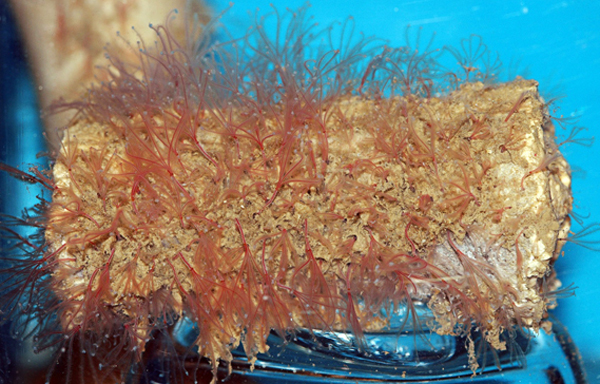Deep-sea worms drop acid to get dinner
Bone-eating worms produce chemicals to dissolve and feed on skeletons
- More than 2 years ago
Bone-eating worms, the deep-sea creatures that feed on whale skeletons and other bones, dissolve their dinner in an acid bath. Now scientists from the Scripps Institution of Oceanography in La Jolla, Calif., have pinpointed the worms’ acid-making machinery: Cells in the creatures’ rootlike bases are loaded with proteins that generate acid and pump it onto the bones.
The delicate, feathery-fronded creatures in the genus Osedax use acid to get at the nutritious collagen and fat in bone. But how these zombie worms generate the acid was a mystery. Dissections and lab tests suggest that that the worms make acid using chemistry involving the surrounding seawater and carbon dioxide produced during metabolism, scientists report May 1 in the Proceedings of the Royal Society B.
Such a scenario would go something like this:

First, extract H2O from seawater. With the help of carbonic anhydrase, an acid-generating protein, react the water with carbon dioxide expelled from cells in the boneworms’ bases. This yields bicarbonate (HCO3−) and protons (H+). Pump these protons onto the bone to dissolve its hard structure and free up delicious collagen and fat. The researchers don’t yet know how the worms — which were described by science less than a decade ago — then absorb their dinner.
The boneworms’ trick for dissolving bone is oddly similar to one used by specialized cells in mammals, the researchers report. Those cells break down bone during normal growth; in older people their activity can lead to osteoporosis.






